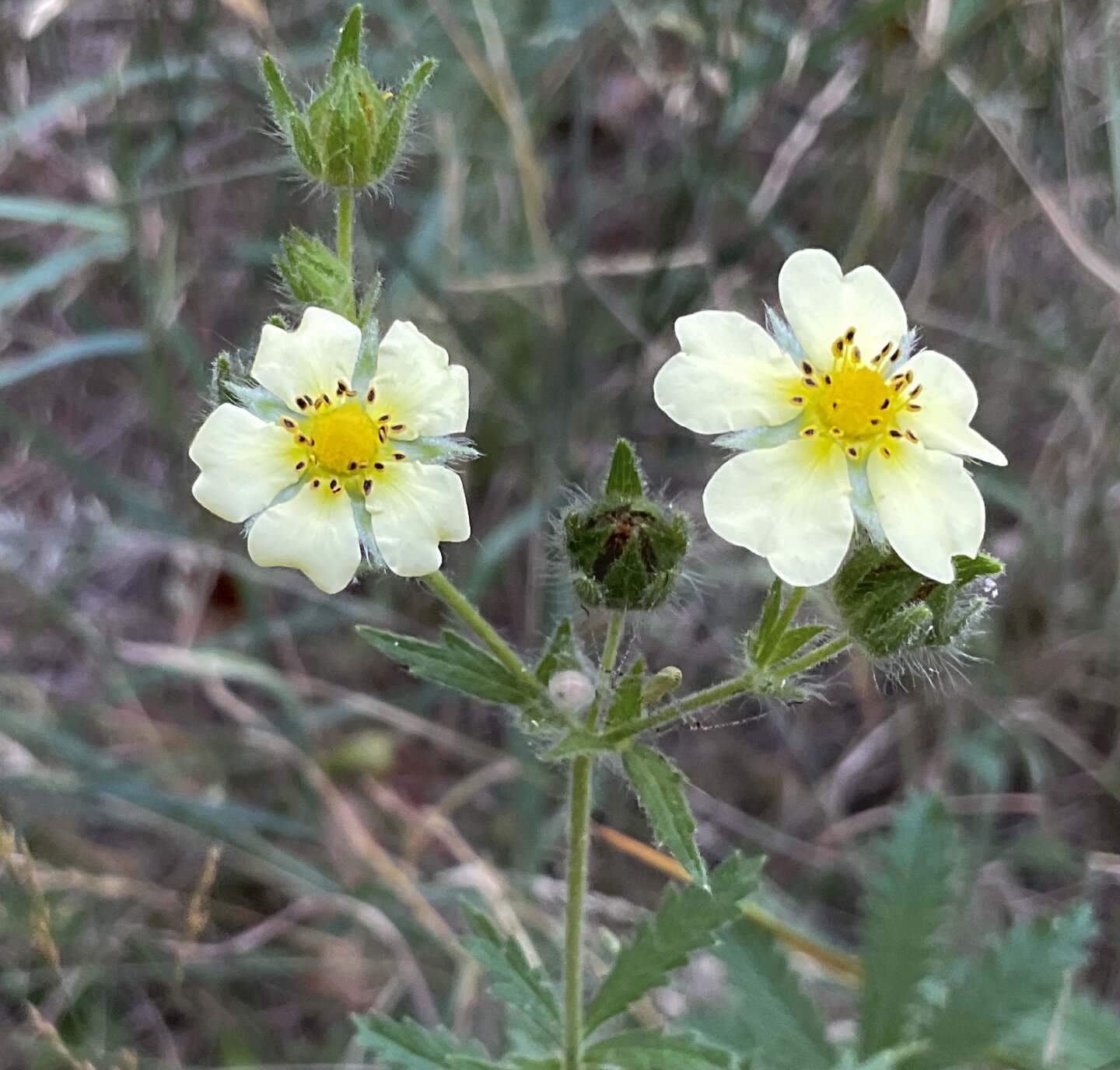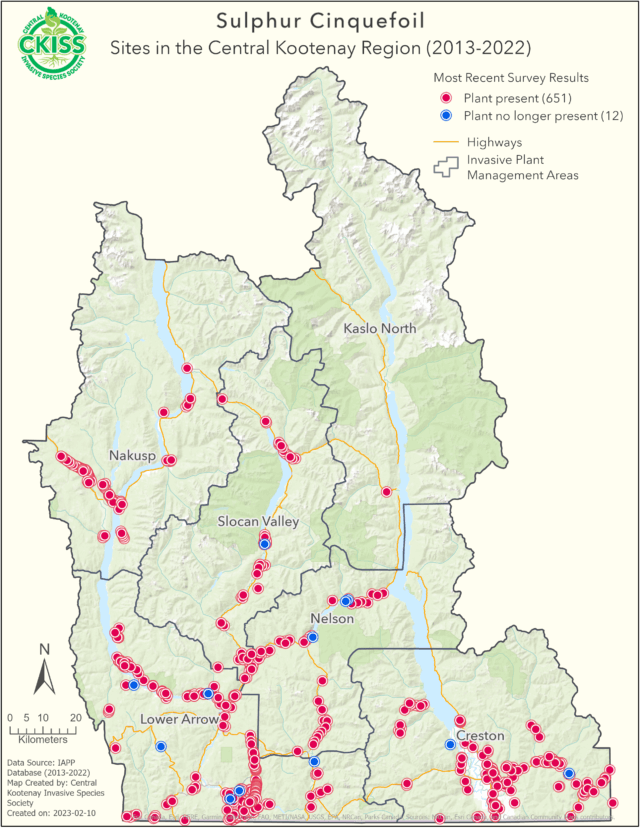Potentilla recta
Description
- Pale yellow flowers, each with five heart-shaped petals
- Hairy toothed leaflets, arranged in a palm-like formation
- Plants can grow from 0.3 to 0.8 meters tall
- Establishes in grassy open areas or along disturbed sites like road sides

Introduction and spread
- Native to Eurasia
- Produces over 1600 seeds and can be dispersed by humans, wildlife, or machinery
- Has a deep root system allowing new shoots to emerge from the main root even after 20 years
Consequences of invasion
- Due to its unpleasant taste, infestations decrease available forage for grazers.
- Infestations can decrease local plant biodiversity by outcompeting native plants.
Status in the CKISS region
- Sulphur cinquefoil is widespread in the CKISS region and its management priority is classified as Strategic Control on the CKISS Annual Priority List.
- While it is not realistic to eradicate this species at the landscape level, this species may be treated at high priority sites (e.g. wildlife habitat, adjacent to agricultural land, etc.) based on specific land management objectives to protect site-specific values.
- To learn more about how CKISS classifies and manages invasive species, see our Invasive Species Priority Lists page.
Integrated pest management options
Prevention
- Minimize soil disturbance in areas near infestations, like grazing or road construction.
- For early detection of new plants, monitor treated sites for several years.
- Clean equipment, vehicles, animals, and clothing before leaving infested areas.
- Become PlantWise to avoid planting sulphur cinquefoil in your garden.
Mechanical
- Hand pulling may be effective for small infestations. However pulling or digging should be performed before seeds mature and while the soil is moist.
- Cutting or mowing larger infestations does not appear to reduce seed production and will usually cause new shoot growth.
- Cultivation followed by seeding with grass species appears to be effective for large infestations.
Biological
- No biocontrol currently available in BC.
Chemical
- It may be an option. Consider site characteristics and contact professionals to determine if this option is right for you.
Additional resources


